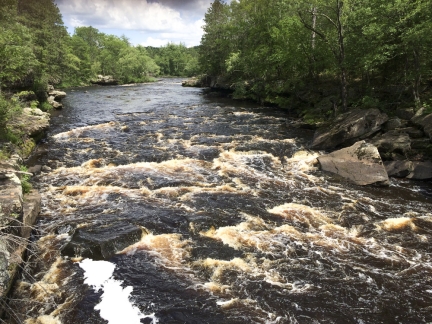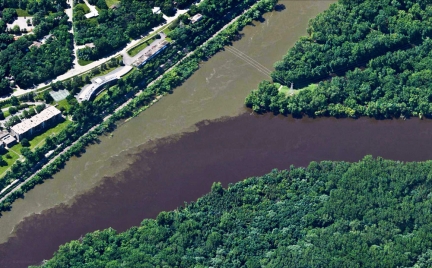
In general, Minnesota streams in the northeast part of the state are in better condition than elsewhere. Stream conditions — including the condition of fish and other organisms, and levels of nitrogen, phosphorus, and other pollutants — worsen as you move west and south in the state. The changes correspond to the type and intensity of land use in each ecoregion, due to the differences in soils, climate, and other factors.
Overall conditions
- Good progress has been made — mostly through improved wastewater treatment by cities and businesses — in reducing the levels of several pollutants in Minnesota waterways, including phosphorus, ammonia, and bacteria.
- Nitrogen is the key, high-volume pollutant in state rivers and streams and has been increasing over time. Chloride concentrations are also rising.
Current regulations and voluntary best management practices will not be sufficient to maintain healthy rivers and streams and shield impaired ones from additional pollution. Even if all existing laws were followed to the letter, waterways would still be subject to unacceptable levels of nutrients and other contaminants. Targeted action will be required to cut off unregulated sources of pollution.
North-northeastern region and the Arrowhead
- Good health. Water courses retain much of their natural character in this area and 41% of the region is forested again after being heavily logged historically.
- Supports life. In the watersheds the MPCA has fully assessed in the region, 74% of the streams meet water quality standards for aquatic life.
Central region and metro area
- Some stresses. This area combines characteristics of both the northeastern and southern regions; stream quality in this transitional region is mixed. Development in the Twin Cities metro area has compromised the health of the area's rivers and streams.
- Many impaired. In the watersheds the MPCA has fully assessed in the region, only 37% of the streams meet water quality standards for aquatic life.
Southern and western Minnesota
- Nitrogen pollution. Nitrogen levels are lower in the Red River Basin than elsewhere, but may rise as agricultural drainage practices increase.
- Most impaired. In the watersheds the MPCA has fully assessed in the region, only 16% of the streams meet water quality standards for aquatic life.
The Minnesota River

The rivers in Minnesota, particularly the Mississippi, the St. Croix, the St. Louis, and the Red River, capture our imagination and attention as both sources of water and recreation areas. But the Minnesota River is one that highlights many of the problems facing the state’s rivers. Data indicates that the river and its tributaries have elevated sediment and nutrient concentrations and high bacteria counts. The river’s water is clouded with sediment, which can harm aquatic organisms. And the Minnesota feeds into the Mississippi River, loading it with excess sediment and pollutants. However, several projects aim to improve the health of the river, such as the MPCA’s sediment reduction strategy.